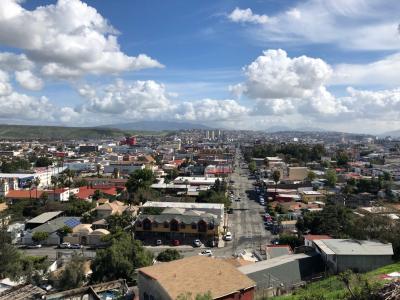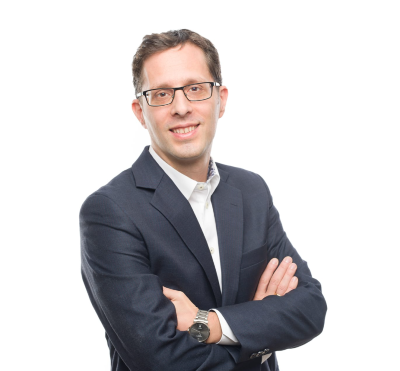Leir Migration Monitor: "Before you make the journey, you don't understand anything"

Hopes, Fears, and Illusions: notes from the field
Since our research teams returned from the field in August 2023, we have been analyzing the results of their in-depth interviews with 131 migrants from 15 countries. Most of the questions were open-ended, requiring a lengthy process of qualitative coding, but we have generated some descriptive statistics that we report in Entry #5. Read the full entry here.
Migrant profiles: With regard to country of origin, age, gender, time since departure, and country of destination, our sample maps quite well onto the overall population of U.S.-bound migrants on the route from Colombia to the U.S.-Mexico border. Reflecting regional trends, Venezuelans constitute the vast majority of our sample.
Reasons for leaving home: The five most-cited reasons for migrating were family support, low wages, fear of violence, inflation, and weak rule of law. We find variation, however, when we disaggregate these responses by country of origin.
Access to information: Two-thirds of our sample knew someone in the United States but with notable variation across countries of origin. Among a list of eight U.S. immigration policies, the migrants we interviewed were most familiar with CBP One, asylum, and Title 42.
Key takeaways: U.S.-bound migrants are fleeing for a multitude of reasons, often with limited (or incorrect) information about what they are likely to encounter if and when they get to the U.S.-Mexico border. Venezuelans have weaker networks in the United States and less access to information and, together with Haitians, are often part of a "second exodus" from countries to which they migrated before the pandemic.
Read more here and on our website:

In the Holy Land: The Lives and Activities of Tibetan Refugees in India
The Tibet Series from the Refugees in Towns Project, written in collaboration with the Sarnath International Nyingma Institute, documents the experiences of Tibetan refugees in India.
The Sarnath International Nyingma Institute (SINI) is located in Sarnath, India, which is considered to be the place of Buddha's first sermon. Since 2013, SINI has been working to preserve Tibetan cultural and religious knowledge.
The following series documents the varied experiences of three different Tibetan refugees across the country.
Thubten Dawa spent over a decade studying at the Namdroling Monastery to qualify as a Lopon, and has since been the manager for the annual Nyingma Monlam Chenmo (the Great Prayer Festival of Tibet’s Old Tradition) in Bodh Gaya. During the pandemic, he mobilized money and resources through SINI to help provide food for starving families in Sarnath. Post pandemic, he secured funding to help 22 families earn their own living.
Khenpo Ju Tenkyong came to India after the destruction of Serta Larung Gar, the largest and most significant new Tibetan Buddhist institute established in post-Mao China. He initially worked for the Library of Tibetan Works and Archives as a writer and a researcher. Since 2012, he has been working with Geshe Monlam on the Monlam Grand Tibetan Dictionary in an attempt to create a comprehensive dictionary for the Tibetan language.
Amchi Rinchen Gyasto is an Amchi, a practitioner of traditional Tibetan medicine. He opened a Tibetan Medicine Clinic in Chandigarh in 2022, which until its closure in 2023 provided the people of Chandigarh with a variety of treatments, including traditional Tibetan medicine and providing guidance for physical and mental fitness, proper diet and a healthy lifestyle.

Spotlight: Christoph Altermatt, F08

Christoph Altermatt is Co-Head of Unit at the State Secretariat for Migration in the Swiss federal government. He has been with the State Secretariat since 2013. His unit in the International Affairs directorate is responsible for all policy matters in the area of Schengen and Dublin with the European Union, and all bilateral relations with EU-member states in the area of migration.
Before joining the government he spent two years in Kosovo as Legal Advisor and Head of Personnel of the Swiss KFOR peacekeeping force, and as Legal Consultant for GIZ, the German Agency for International Cooperation. Shorter professional assignments and internships took him to Bosnia-Herzegovina and Haiti. Chris holds a Masters of Law from the University of Fribourg, Switzerland, and he graduated with the Fletcher School's MALD degree in 2008, where he focused on Human Security and Peacebuilding. He is married and has two daughters.
I’m working on consolidating the Swiss position on the various EU-proposals in the context of the new Pact on Migration and Asylum presented by the European Commission back in 2020. At the moment, negotiations are in the final stages between the EU Council (the Member States’ governments) and the EU Parliament. Due to the upcoming EU elections in spring/summer 2024, there is immense pressure to reach an agreement beforehand.
An insight I’ve discovered is that migration is a very debated topic and is frequently politicized in a way that affects the most marginalized in society. In migration policy, because so many parameters come into play, state policy mostly trumps the interest of the directly affected population, be it in the area of labour migration, asylum, or visa policy. This is evident in the EU proposals currently being negotiated. Therefore, it is sometimes hard to reconcile policy with one's own convictions when working in government.
I’m passionate about the people around me – family, professionally, socially. I draw energy from my loved ones, and as a manager I try to create a positive and inspiring environment at work where colleagues can thrive and are happy to come to the office and connect remotely.
You can find our content at www.leirbrief.org.


